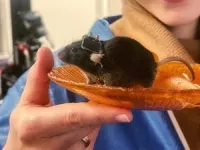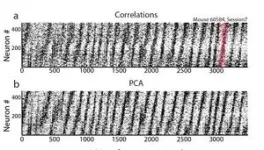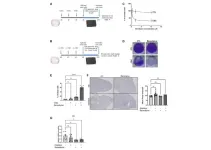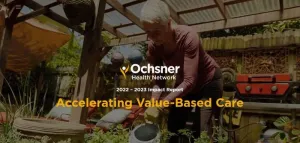(Press-News.org) Scientists at NTNU’s Kavli Institute for Systems Neuroscience in Norway have discovered a pattern of activity in the brain that can serve as a template for building sequential experiences.
“I believe we have found one of the brain’s prototypes for building sequences” says Professor Edvard Moser.He describes the activity pattern as “a fundamental algorithm that is intrinsic to the brain and independent of experience.”
The breakthrough discovery was published in Nature 20. December 2023.
The ability to organise elements into sequences is a fundamental biological function essential for our survival. Without it, we would not be able to communicate, to keep track of time, to find our way, or even remember what we are in the process of doing. The world would cease to present itself to us in meaningful experiences, as every event would be fragmented into an erratic series of random happenings.The NTNU researchers´ discovery of a rigid sequence pattern in the brain provides new insights into how we organise experiences into a temporal order.
The sequential nature of memory
Have you ever heard memories described as snapshots? That is not a very faithful description, according to Professor Edvard Moser. “It is more helpful to think of memories as videos,” he says.“All your experiences in the world extend over time,” says Professor May-Britt Moser. “One thing happens, then another thing, then a third.”Your brain has the remarkable ability to mentally capture and organise selected events into the chronological order in which they occurred, and to link them together as meaningful experiences. This sequence building activity takes place on the timescale in which you interact in the situation. When you recall this memory, the process of reliving the sequence of events in your mind also takes time.“How is the brain able to generate and store all these unique and lengthy sequences of information on the fly?”, asks Edvard Moser. “There has to exist a foundational mechanism for sequence formation there.”“There is a mismatch in neuroscience between the timescales at which brain activity is typically studied, in the millisecond regime, and the timescales at which many of our most important brain functions occur, in the tens of seconds to several minutes range”, says Soledad Gonzalo Cogno, Kavli Research Group Leader and first author of the paper, expanding on the motivation behind this study.The team set out to identify this fundamental mechanism for sequence formation, which occurs on very slow timescales, like most of our brain functions do.
The experiment
To uncover how neurons coordinate at the slow timescales at which many of our brain functions unfold, the Kavli researchers focused on the medial entorhinal cortex (MEC), a brain area that supports brain functions that depend on sequence formation, such as navigation and episodic memory, which unfold very slowly in time.The sheer volume of information about the outside world being processed in the brain at any one time posed a challenge to the pursuit. Any baseline signal from structured and recurrent neural algorithms would risk drowning in the “noise” of incoming experience.To get around this, the researchers created an experimental environment that was almost devoid of sensory inputs. They let a mouse run in complete darkness, with no task to complete and no reward to earn. The mouse could run or rest as it pleased, for as long as the session lasted.At the same time, the researchers recorded what was happening in the entorhinal cortex of the mouse’s brain while its orchestra of nerve cells remained in this soft-spoken standby position.
A fundamental brain mechanism for sorting information into sequences
“This is what we found,” says Soledad Gonzalo Cogno, pointing to a zebra-striped figure in front of her.The pattern is made up of thousands of dots clustered together. Each dot is a neural signal. We can see that the neural activity moves through all the cells from bottom to top along the Y-axis as time progresses along the X-axis. The clustering tells us that the activity is coordinated as waves running through the network, like rhythms in a symphony. The sequences are ultra-slow, meaning that it takes two minutes for the wave to travel through the neural network, before the whole process repeats again, sometimes for as long as the duration of the test session, over periods of up to an hour.The figure shows several hundred mouse entorhinal cortex neurons oscillating at ultra-slow frequencies, spanning time windows ranging from tens of seconds to several minutes. The dynamic that excited the researchers even more is that as each cell oscillates, the cells also organise themselves into sequences, with cell A firing before cell B, cell B firing before cell C, and so on, until they have completed a full loop and return to cell A, where the cycle repeats. This highly structured activity overlaps with the timescale of events that we encode into our memories and provides the perfect template for building the sequential structure that forms the basis of episodic memories.These waves of coordinated activity did not travel in a straight line from one end of the brain tissue to the other. Instead, the waves travel along the thin synaptic connections between cells that talk to each other in the network. Cells can talk to other cells far away as well as to their nearest neighbours. The anatomical tangle makes it difficult to see coordinated activity with the naked eye without first having located the cells from the raster plot.
This video illustrates this.
https://www.youtube.com/watch?v=JFwOeXvAeC0
Zebra-stripes, Spiral, and Ring
The zebra-striped raster plot shows the slow waves of activity through the whole network over a period of time.“If you fold the raster plot into a tube, so that the top and the bottom of the figure overlap, you will see that the diagonal stripes connect to form a coherent spiral,” explains May-Britt Moser. “The spiral represents the network activity over time”.If you rotate the spiral by 90 degrees, you will see a ring. All the cells in the network have their set time to fire, distributed across the surface of this ring. The signal travels through the entire ring structure before returning to the same cell.“This ring is a signature for coordination patterns in the form of repetitive sequences, which is what we found in the MEC”, says Soledad Gonzalo Cogno. “Other brain areas have different coordination patterns”.Your brain may already be equipped with this ring before you experience anything in this world. It is acquired through evolution and may be specified in our genes“What excites me most about this discovery is the prospect that these sequences may open up for new ways of understanding the brain,” says Gonzalo Cogno. “The discoveries that follow may challenge the way we think about coordination throughout the brain. Cells that are so different still seem to be coordinated and work together on different timescales.”
END
A framework in your brain for organising the order of things
Scientists at NTNU’s Kavli Institute for Systems Neuroscience in Norway have discovered a pattern of activity in the brain that serves as a template for building sequential experiences
2023-12-20
ELSE PRESS RELEASES FROM THIS DATE:
Benidipine calcium channel blocker improves cigarette smoke-induced lung emphysema
2023-12-20
A new research paper was published in Aging (listed by MEDLINE/PubMed as "Aging (Albany NY)" and "Aging-US" by Web of Science) Volume 15, Issue 23, entitled, “Benidipine calcium channel blocker promotes the death of cigarette smoke-induced senescent cells and improves lung emphysema.”
Smoking is the main risk factor for many lung diseases including chronic obstructive pulmonary disease. Cigarette smoke (CS) contains carcinogenic and reactive oxygen species that favor DNA mutations and perturb the homeostasis and environment of cells. CS induces lung cell senescence resulting in a stable proliferation arrest and a senescence-associated ...
Researchers uncover on/off switch for breast cancer metastasis
2023-12-20
Despite their promise, immunotherapies fail to treat many cancers, including over 80% of some of the most advanced breast cancers. And many of those patients who do respond still experience metastases eventually. New research from Stanford University and the Arc Institute has revealed a better way to predict and improve patient responses.
A team led by Lingyin Li, associate professor of biochemistry at Stanford and Arc Core Investigator, found that a protein called ENPP1 acts as an on/off switch that controls breast cancer’s ability to both resist immunotherapy and metastasize. The study, published on ...
Tracking roadway savings from coast to coast
2023-12-20
Oak Ridge National Laboratory researchers have identified the most energy-efficient 2024 model year vehicles available in the United States, including electric and hybrids, in the latest edition of the Department of Energy’s Fuel Economy Guide.
The annual online resource compares fuel costs for two-seaters up to large sedans, small and midsize station wagons, minivans, small and standard sport utility vehicles and small and standard pickup trucks. A quick reference top 10 list is searchable for make, model and class, too.
“With the national average of gasoline over $3 per gallon, drivers need to know how much they can save by ...
Brain lesions in former football players linked to vascular, brain changes
2023-12-20
EMBARGOED FOR RELEASE UNTIL 4 P.M. ET, WEDNESDAY, DECEMBER 20, 2023
MINNEAPOLIS – Signs of injury to the brain’s white matter called white matter hyperintensities, as seen on brain scans, may be tied more strongly to vascular risk factors, brain shrinkage, and other markers of dementia in former tackle football players than in those who did not play football, according to a study published in the December 20, 2023, online issue of Neurology®, the medical journal of the American Academy of Neurology.
“Studies have shown that athletes exposed to repetitive head impacts can have increased white matter hyperintensity burden in their brains,” ...
$6 million National Science Foundation award to Binghamton will accelerate research translation into broader societal benefits
2023-12-20
BINGHAMTON, N.Y. -- A Binghamton University team is one of just 18 nationally that will share in $100 million in U.S. National Science Foundation (NSF) funding from the Technology, Innovation and Partnerships (TIP) Directorate to accelerate the pace and scale of translational research.
The Accelerating Research Translation (ART) program will provide $6 million to Binghamton as a cooperative agreement over four years to source and grow pivotal innovations that, with help from the technology transfer office, can go to market and have a positive impact on society.
“Binghamton is quickly ...
Rise of archery in Andes Mountains dated to 5,000 years ago — earlier than previous research
2023-12-20
When did archery arise in the Americas? And what were the effects of this technology on society?
These questions have long been debated among anthropologists and archaeologists. But a study led by a University of California, Davis, anthropologist, is shining light on this mystery.
Focusing on the Lake Titicaca Basin in the Andes mountains, anthropologists found through analysis of 1,179 projectile points that the rise of archery technology dates to around 5,000 years ago. Previous research held that archery in the Andes emerged around 3,000 years ago.
The new research indicates that the adoption of bow-and-arrow technology coincided with both the expansion of ...
Ochsner Health Network announces multi-million dollar impact
2023-12-20
Ochsner Health Network, LLC (OHN), the Gulf South’s largest physician-led clinically integrated network, is pleased to report its 2022 – 2023 impact resulting from care delivered to nearly a half-million patients living throughout the Gulf South. The network’s all-new digital report boasts more than $56 million in total cost-of-care savings to our community’s most vulnerable populations, with $38 million in rewards to be shared among the network’s providers.
“Our country’s healthcare system must evolve; our communities’ health must improve; and the rising costs of care must be reversed. Proudly, Ochsner Health Network remains ...
Management of refractory or relapsed classic Hodgkin lymphoma in Brazil
2023-12-20
A new review paper was published in Oncotarget's Volume 14 on December 12, 2023, entitled, “Current perspectives on the management of refractory or relapsed classic hodgkin lymphoma in Brazil: Balancing efficacy, safety, and tolerability.”
Classic Hodgkin lymphoma (CHL), which accounts for 90–95% of all cases of Hodgkin lymphoma, is the most frequent cancer in adolescents and the most frequent lymphoma in adolescents and young adults. Despite progressive improvements over past decades and the general sensitivity of ...
Want to keep Gen-Z off vaping? Teach them about the industry’s marketing tactics, Drexel study says
2023-12-20
Young adults who are more familiar with e-cigarette marketing practices are more likely to have attitudes against vaping than those unaware of the industry’s marketing, according to a study led by Drexel University public health researchers published this month in the BMJ journal Tobacco Control. Expanding on ways cigarettes were marketed in the 1970s, such as using models and hosting smoking events, e-cigarette marketing includes more modern tactics, like paying social media influencers to promote vaping. The findings, from researchers at Drexel’s Dornsife School of Public Health and The National Institute ...
Evidence early, but emerging, that gamma rhythm stimulation can treat neurological disorders
2023-12-20
A surprising MIT study published in Nature at the end of 2016 helped to spur interest in the possibility that light flickering at the frequency of a particular gamma-band brain rhythm could produce meaningful therapeutic effects for people with Alzheimer’s disease. In a new review paper in the Journal of Internal Medicine, the lab that led those studies takes stock of what a growing number of scientists worldwide have been finding out since then in dozens of clinical and lab benchtop studies.
Brain rhythms (also called brain “waves” or ...
LAST 30 PRESS RELEASES:
Chonnam National University researchers propose innovative voltage-loop control for power factor correction
Accelerating next-generation drug discovery with click-based construction of PROTACs
Detecting the hidden magnetism of altermagnets
$7M gift supports health research, engineering and athletics at UT San Antonio
NU-9 halts Alzheimer’s disease in animal model before symptoms begin
Hospitals acquired by real estate investment trusts associated with greater risk of bankruptcy, closure
City of Hope scientists study rare disorder to uncover mechanism and hormone regulation underlying fatty liver disease and sweet aversion
Your genes may influence gut microbiome of others, rat study shows
‘Personality test’ shows how AI chatbots mimic human traits – and how they can be manipulated
Global food systems driving twin crises of obesity and global heating
Osaka Medical and Pharmaceutical University researchers capture real-time molecular movies of enzyme catalysis
Could your genes influence the gut microbiome of others?
Clues to Alzheimer’s disease may be hiding in our ‘junk’ DNA
Study reveals that the body uses different sensors to detect cold in the skin and in internal organs
iPS cells from dish to freezer and back
Deep neural networks enable accurate pricing of American options under stochastic volatility
Collective risk resonance in Chinese stock sectors uncovered through higher-order network analysis
Does CPU impact systemic risk contributions of Chinese sectors? Evidence from mixed frequency methods with asymmetric tail long memory
General intelligence framework to predict virus adaptation based on a genome language model
Antibiotic resistance is ancient, ecological, and deeply connected to human activity, new review shows
Vapes, pouches, heated tobacco, shisha, cigarettes: nicotine in all forms is toxic to the heart and blood vessels
From powder to planet: University of Modena engineers forge a low-carbon future for advanced metal manufacturing
Super strain-resistant superconductors
Pre-school health programme does not improve children’s diet or physical activity, prompting call for policy changes, study finds
Autumn clock change linked to reduction in certain health conditions
AI images of doctors can exaggerate and reinforce existing stereotypes
Where medicine meets melody – how lullabies help babies and parents in intensive care
We may never be able to tell if AI becomes conscious, argues philosopher
AI video translation shows promise but humans still hold the edge
Deep ocean earthquakes drive Southern Ocean’s massive phytoplankton blooms, study finds
[Press-News.org] A framework in your brain for organising the order of thingsScientists at NTNU’s Kavli Institute for Systems Neuroscience in Norway have discovered a pattern of activity in the brain that serves as a template for building sequential experiences







